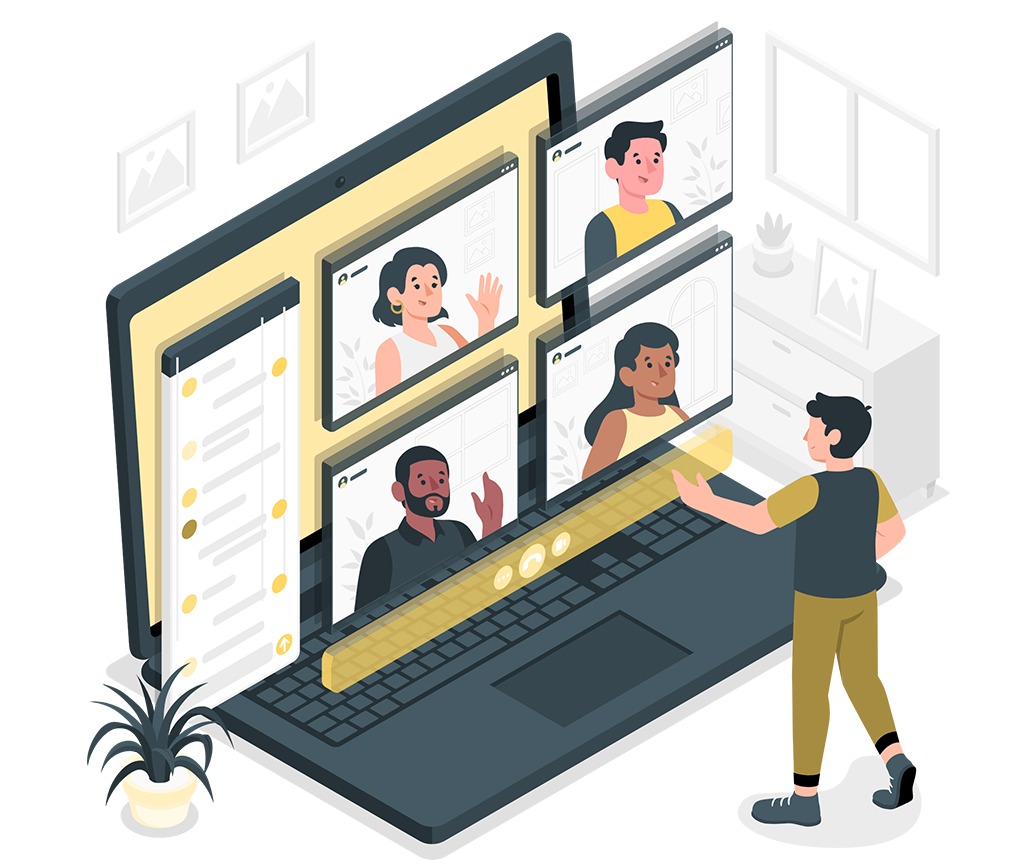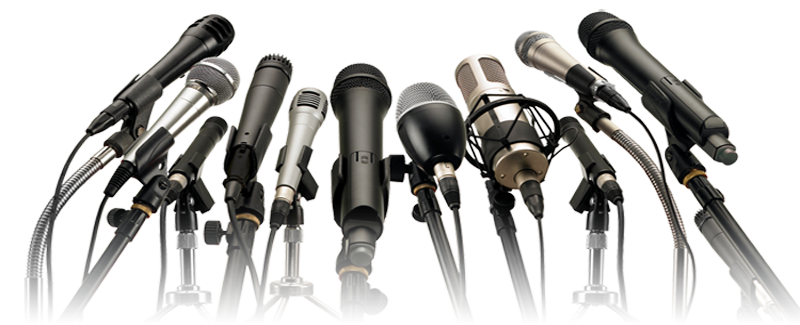Media Training
Empower your team an its individuals to deliver your core messages with confidence and flair.
Media Training Days & Workshops
Empower your team to tackle any media requests on message and with confidence
Many employees, no matter at what level, can panic when a media request for an interview hits their desk. What should they say? What shouldn't they say? The alarm bells start ringing. Through our one-to-one or team training, we'll work with you to design a workshop or course that allays their fears and empowers them to deliver the right messages, in the right way to the right audience.
Key elements of our training cover:
Understanding the media:
what do they want?
Mentions in broadcast or print media are known as ‘earned’ PR
(which also includes word-of-mouth, praise on social media etc).
hence why it’s ‘earned’. That said, what journalists want is actually very simple,
and anyone who can help them achieve their goals can generate a mutually beneficial relationship with the media.
Journalists want:
Great stories
- Journalists are looking for fresh information—and ideally, they want an ‘exclusive’.
- If a story has been covered before, they will want an original angle they can use to sell it to their editor.
- They will be catering to a specific audience.
- They prefer a personal, human angle—it makes a more emotive story.
Clear and reliable information
- Anything you give them should be accurate.
- Make your point clearly, succinctly and in accessible language.
- They will always want you to support your points with facts or examples.
- Be immediately engaging! Journalists may filter emails by subject line.
To hit their deadlines!
- They expect to be treated like a professional contact, so keep your promises.
Interviews
Interviews are opportunities to get your message in front of a potentially wide audience,
including prospective supporters and collaborators—at no cost.
Interviews
Interviews are opportunities to get your message in front of a potentially wide audience, including prospective supporters and collaborators—at no cost.
Interviews will come in a variety of formats but there are
some common rules to follow:
- Preparation is vital, to take control and maximize the opportunity.
- Be positive and professional.
- Stay on topic.
- Interviews should be conducted by someone who is:
- Well-informed, credible and articulate.
- A reliable expert in the area.
- Someone who provides a dynamic, relevant and compelling story, and is creative enough to provide a fresh angle for each media outlet.
Print interview
Conducted in-person or over the phone, a print journalist will be collecting key facts and quotes that they can shape into their own article.
- Don’t say anything you don’t want printed!
- Remember print interviewers can still comment on what they see and hear.
- Print journalists will want detail and human interest, so come prepared with examples to colour your story.
Audio interview (Radio & podcast)
It may only last minutes and is geared toward obtaining the desired sound bite, but might also include panel discussions, phone-in shows and studio debates, running at half-hour or longer.
- Always check to see if the media interview is in studio or by phone.
- If it’s by phone, try to use a landline and make sure you have a quiet space.
- If you use your mobile, make sure it’s fully charged and has good reception.
- In many cases, media interviews are taped for social media and online channels, so check in advance if video will be recorded.
- In a one-on-one interview, speak to the interviewer, not the microphone, and never try to hold the microphone!
- Avoid sighs, yawns, squeaking your chair and other noisy activities—the microphone captures everything.
- Sometimes nerves can lead to a dry mouth, so always have a glass of water available.
TV and digital video interview (see Section 6)
These may be live or recorded, in a studio, down-the-line, or remote (over zoom or similar).
In any instance, all the audience has to relate to is your face and your words, so TV and video interviews are a great opportunity to show your personality.

Live interviews:
- Likely to be a short interview, perhaps just three or four questions
- All of it will be used, so you have editorial control over what the audience hear and see
- Preparation is more vital than ever as there’s no second chances!

Recorded interviews:
- You can take your time when replying so that you get your ideas across effectively.
- If you want to re-answer a question, suggest to the interviewer that you could provide a more concise, clearer or different response. Equally, if a claim they make is inaccurate or you’re not qualified to talk about something, pause the interview and correct them.
- They may only use a few seconds as a clip for their story even if the interview goes on for a few minutes, so don’t try to say too much, and stay on topic.
- Your interviewer may be edited out, so always include the question in the answer:
- Q: “What has been the biggest challenge for you this year?”
- A: “The biggest challenge this year has been…”

Remote / down-the-line interviews
- ‘Down-the-line’ refers to an interview conducted remotely where the interviewee cannot see the interviewer and the questions are asked through an earpiece.
- Down the line interviews can be live on-site, or pre-recorded in a purpose-based studio.
- Increasingly, remote interviews are replacing ‘down-the line’ as video calling software becomes more reliable.

With remote interviews, lighting and sound are your responsibility:
- Use lots of natural light when possible, avoid angles that put light sources behind you.
- Set up a test zoom call to see what the camera will capture and experiment with angles.
- There’s no need to have a plain background, you can display pictures or bookshelves behind you, but make sure it’s a professional setup—no one wants to see your laundry!
- When it comes to audio, use a high-quality USB microphone if you have one, or test out a few options (like different sets of mic’d headphones) to find the best one.
Communicating your message:
key messages
Never go into a media interview without a clear agenda. If you plan ahead,
you can meet both your own goals and the interviewer’s,
with an informative and interesting piece of content.
Step 1: Set your agenda for the interview
- Ask what kind of news story and headline you would like to see. From there, determine your messages and build that story.
Step 2: Identify your audience
- Remember the interviewer is not your key audience. They serve as a vehicle.
- Your audience might be:
- Existing and potential supporters or partners
- Commercial companies (partnerships and fundraising)
- It is crucial that you understand what motivates your audience.
Step 3: Determine your communications objectives
- How do you want to motivate this audience? What actions do you want them to take?
- Support with donations
- Visit your website to join
- Volunteer

Key messages
- Break the information down into key pieces of information you want the audience to take away from the interview, remember, and act upon.
- Develop three to five clear, concise messages. They should be:
- Short (15-second nuggets of information)
- Positive
- Relevant to the context of the interview
- Clear and concise
- The purpose of each message is to motivate your audience.

Support key messages by practicing ABC (Articulate your point; Back it up; add Colour).
- Articulate your point
- Keep it simple. Stay conversational, use your own words and avoid jargon.
- Back it up
- Use facts that are simple and easy to understand.
- Illustrate them with examples and details to make them memorable.
- Cite stats in human terms (say “one in five people,” not “20% of the population”).
- Include information and/or studies from third-party experts or sources.
- Add colour
- Include analogies, comparisons, anecdotes, personal experience.
- Use descriptive language and vivid pictures to make points more interesting.
How to weave your key
messages into the narrative

Take control
- An interview is an opportunity. Lead it where you want it to go so you can deliver your key messages and fulfill your objectives.
- Don’t wait for an invitation to share your key messages, it’s up to you to introduce them into the conversation at every opportunity.
A quick guide to embracing your inner politician
You have to think like a politician to effectively leverage a media interview. This means:
- An interview is an opportunity. Lead it where you want it to go so you can deliver your key messages and fulfill your objectives.
- Don’t wait for an invitation to share your key messages, it’s up to you to introduce them into the conversation at every opportunity.
Stay on message
- Have three key bullet points that you want to convey.
- Try to pivot back to one of your points in response to each question.
- Use the techniques below to deliver your key messages and help take control of each opportunity.
Never go ‘off the record’
You might have a short chat with the interviewer before the camera or mic gets turned on, but be careful what you say as it might end up in the interview!
Prepare!
Rehearse your interview with a colleague beforehand.
When answering media questions, it can help to remember another ABC:
Acknowledge, Bridge, Communicate

Acknowledge:
Bridge
Pivot back to one of your key points. By using bridging techniques, a person can refocus or redirect the interview to concentrate on the most important, relevant and critical points. Examples of bridging:
- “While [x] is important, it is also important to remember…”
- “The key here is…”
- “What this all boils down to is…”
- “And what’s most important is…
- “In fact, remember [x] is…”
Don’t confuse bridging with avoidance. You should always answer the interviewer’s question, but don’t feel you have to limit your response to the question alone.
Other interview techniques
to be aware of:
Flagging
- A technique that allows you to put more emphasis on certain points that support your key messages.
- Examples of flagging:
- “Let me be clear…”
- “This is the most important point…”
- “Our entire focus is…”
- “The big news is…”
- “I want to stress that…”
Listing
Cherry-picking
Repetition
How to deal with difficult questions
Interviewers will ask you many types of questions, depending on their agenda and needs.
Some are designed to elicit information, while others may provoke a reaction.
Recognising the nature of a question will help you respond more effectively.
Safe questions: Be sure to answer these fully — they help you and the interviewer.
- Informational questions (e.g., Can you tell viewers where they can find out more?)
- Confirmational questions (e.g., “Can you confirm that…”)
- Vague or open media questions (e.g., “What is happening in your field at the moment?”)
- Non-questions (statements, e.g. “It seems to me that…”)
If you are responding to bad news or a crisis, difficult questions are unavoidable. Ideally, you should be prepared for the hard questions and have a rehearsed answer. But if not:
- Never respond to hostility from an interviewer.
- Stay calm, don’t get flustered.
- Remember the bridging techniques (Section 4)
- Remain calm, but show humanity and empathy. Rather than resorting to “No Comment”, try to stick to the three Rs:
- Regret (Saying “sorry” without admitting liability)
- Reason (Stick to the facts)
- Remedy (Actions – what you are doing about this crisis)
Other types of dangerous questions to watch out for:
- Confrontational/loaded questions: designed to surprise you or repeat the negative. Don’t repeat negative questions; correct the error and bridge back to your message.
- Hypothetical or speculative questions: Trying to get you to comment on something that may be unlikely to happen and runs the risk of taking you off-topic. Don’t try to predict the future; stick to your key messages.
- Repeat questions: The interviewer may repeat a question several times to get you to say something you don’t want to. Repeat your original answer again to stay out of trouble. If you keep repeating the answer, the interviewer will stop asking!
- Off-topic media questions: An interviewer may ask you to comment on a subject you don’t know anything about. Just say you would prefer to discuss your area of expertise and bridge to your key messages.
- Paraphrasing: This is a question that attempts to put words in your mouth. Nip it in the bud with a short “no,” and bridge to your key message.
- Personal questions: Know where to draw the line. Controversial questions are best addressed with short responses. If certain information is in the public domain, answer succinctly and look for an opportunity to bridge to your own agenda.
How to present yourself on
camera and for photographs
Appearing on camera, whether in a live or recorded interview (or even for photographs)
can be daunting for many people. As ever, preparation is key.
General tips
- Find out as much as you can about the interview in advance, including who you will be speaking to.
- Bring your own water and compact mirror.
- If possible, use the opportunity to bring in branding, such as standing in front of a logo wall or wearing a branded uniform.
- Communicating passion and energy is critical in order to engage an audience. For the audience to believe and invest in what you’re saying you need to look and sound as if you mean every word.
- Pay attention to your body language.
- Using your hands to punctuate important points and project energy can help, but practise in front of a mirror or colleague to check your gestures aren’t distracting.
- The camera may be on you even though someone else is speaking, so react appropriately—for example, if you disagree with what someone else is saying, shake your head.
What to wear
- Do a dry run of your outfit ahead of time, and sit in front of a mirror before leaving home. Watch for issues such as gaps in your clothing, and proper sock or skirt length.
- Undo your jacket, straighten your tie down the placket of your shirt and make sure your shirt isn’t gaping.
- Some tips on clothing choices:
- Avoid stripes, or patterns with white: They cause the camera image to ‘flare’.
- Avoid turtlenecks, which can make you look like a floating head.
- Don’t wear noisy jewellery, as the sound will be picked up on the microphone.
- Wear a solid-coloured suit, with a white or light-coloured shirt.
- Single-breasted suits work better if you’re sitting.
- Sit on your coattails to keep the fabric around your shoulders from creeping up.
Standing interviews
- Keep your arms by your sides or in front of your torso. Avoid hugging your body in any way, and resist the temptation to place your hands in your pockets.
- Try placing one foot slightly in front of the other to prevent the dreaded side-to-side sway and keep your energy aimed forward and looking engaged.
Sitting interviews
- Plant your feet firmly on the floor in front of you.
- Sit forward on the front half of the chair. Sitting back and slouching can make you look uninterested and out of proportion.
Top tips for broadcast interviews
The more prepared you are, the more confident
you can be in talking to journalists and being recorded.
Do your research
- Make sure you know any relevant facts or figures that you might want to use or you think you could be asked about.
- Research and note your potential target audience and focus on tailoring your message(s) to them.
Practice mock interviews
- Practice your ‘script’ as you would for a speech, with a colleague.
- In a role-playing setting, determine:
- Are your message points coming across?
- Are your answers concise?
- Are your key messages believable or do they need more support?
Preparing responses beforehand
- Controlled communication: It’s especially important to have prepared responses to any difficult questions that you anticipate. This way you can control the message you are trying to share.
Do a final review
- Review content, especially statistics, before you go ‘live’ to ensure they are still relevant.
- Creating a checklist for a final review can be very helpful.
With preparation complete, there are a few things that it’s important to remember to get the most out of the interview.
Arrive at the interview site early.
You’ll be more comfortable for the interview.
Focus eyes and ears
- Where to look? If you can see the person asking the questions, only look at them. If you can’t see the person asking the questions, only look at the camera.
- Be prepared for distractions in the studio.
- There will be a monitor showing the programme you are about to appear on, and you will be able to see yourself! Be prepared for this and don’t be drawn to it.
- Listen to any instructions, listen to the programme as it goes out before you (as you may well be asked about the contents of the news item before you), and listen to the questions. Block out anything else!
The camera is always on
- The camera – and microphones – are always on, and they’re always on you.
- The audience can see you before the interview starts, and when the interviewer is speaking. Don’t grimace in reaction to a question!
- It’s not over until someone tells you that you are “clear”.
Keep to the point
- In a live interview, you might only have 90 seconds on air. Don’t try to say too much.
- An interview is no place to try to win an argument, it’s just a place to put your position.
- The interview will go out live to people who will be doing other things, not taking notes. Keep hitting those key messages to make sure they come through.
Think before you speak
- Avoid verbal placeholders like “um” or “uh”. If you need to pause to think, often a silent pause (which will feel longer to you than to the interviewer) is more effective.
- The more you prepare, the less likely you’ll be to struggle to find the right words.
Digital communication: How to embrace it
This is ‘owned’ (or in some cases ‘paid’) media. In contrast to press releases and media appearances, you have complete control over the content. Social media platforms provide some of the best and most cost-effective ways to engage with your audience in a personalised way.
Benefits include:
- Brand awareness
- Thought leadership
- Increased website traffic
- Reputation management
- Analytics and insights
- Targeted marketing
However, there are a few potential disadvantages to using social media, so it’s important to work out what your aims are, and who will be taking charge of your social media strategy.

- Time: It takes a lot of time to manage a social media account,
- Cost: If outsourcing, it will take a lot of money to pay for that time.
- Potential for bad publicity
How to attract interest and increase reach
Craft a social media marketing strategy.
The best way to ensure success is to go in with a social media marketing strategy that includes each platform you plan to use and is integrated with your wider PR/Marketing strategy.Post consistently.
You want your followers to know what to expect from you, so follow a consistent posting schedule. This will also help you avoid posting too much, which can be off-putting.
Know your audience.
Use your analytics tools to see demographic information, follower behaviour, and social media trends to inform your content. Knowing what your audience wants to see from you and responding accordingly can go a long way in boosting your engagement rates.
Have fun!
- On social media, an organisation needs to interact like a human.
- Find fun ways to generate more leads and engage with your target audience and supporters, like running contests, hosting live videos with exciting updates or news, or trying the occasional social media takeover by collaborators
Social media can be overwhelming,
but there are tools available to help you manage it :
- Canva: a website that helps you design beautiful content for a variety of social media content, with basic options available for free.
- Meta Business Suite: a tool from Meta, the parent company of Facebook and Instagram, that makes it easier for you to post business content across both platforms.
- TweetDeck: A social media dashboard application for management of Twitter accounts that allows you to schedule tweets and more.
- Hootsuite: a sophisticated social media management system that gives users an integrated user interface from which to manage all their social media accounts.
A social media strategy will be based on which social networks your audience spends their time on, and what your goals are.
- Not every social media platform is a good fit for every organisation.
- Each platform has a purpose and unique audience — for example, Instagram is heavy on visuals, whereas Twitter allows you to inject personality and engage with followers.
- On some sites (Twitter and Facebook for example) you may want your own presence.
- On others (TikTok or YouTube), collaborating with influencers may work better.
- A combination of social media usage on multiple sites will typically yield the best results.
- A highly popular social media network with a varied audience, with over 2.9 billion active monthly users as of 2021, and customisable business options
- It can be used to share everything from photos to opening hours to important updates.
- Facebook also can’t be beaten for targeted advertising.
- Instagram is a visual platform based entirely on photo and video posts, incorporating Instagram Live and Instagram Stories.
- Around 1.1 billion active users in 2021.
- You can share short tweets (<240 characters), videos, images, links, polls and more.
- Best platform for receiving feedback from and directly engaging with the public.
- Can help to create a strong brand voice.
- Great for interaction and engagement by ‘tagging’, liking and retweeting.
- Can be used to handle customer service.
- Ideal for small and niche organisations that can market directly on the site.
- Very visual — popular categories are DIY, fashion, beauty, photography and food.
Snapchat
- A mobile-only, visual social media network that's known for its disappearing content, therefore less pressure to create super-polished content.
- ‘Stories’ allows you to easily create story-driven and interactive content.
YouTube
- Video-sharing platform where people can view, upload, rate, and comment on content.
- Good for driving traffic to other websites, such as your own webpage.
- Many organisations have a creative, visual, or educational YouTube presence, however, harnessing YouTube influencers can be key.
- The best platform for professional networking — geared toward businesses.
- 260 million monthly users — half of all B2B website traffic comes through LinkedIn
- The best place to post job openings and information about your company culture.

TikTok
- A relatively new hit platform where users create and share short videos
- TikTok is mostly popular with Generation Z, and can be difficult to strike the right tone.
- Consider your brand, whether it translates to TikTok specifically, and if so, how.
Press releases

Press releases provide the raw materials or teaser for a story. Sending out a lot of pointless press releases won’t achieve anything, and may work against you when you have something interesting to say. Think about whether this will make a story for your target publication: Look at their website or a recent issue and take an impartial view. Is it something you would expect to read there? Is there solid, new information that will interest their readership?
If you have a decent story or feature idea, you need to know which journalists might be interested. Think about who you’re pitching to and why.


